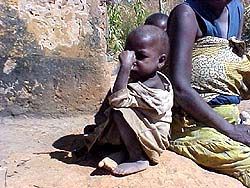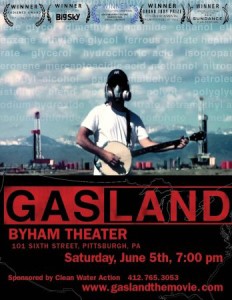This post was written by CHMP Senior Fellow Steve Gorelick who is Professor in the Department of Film and Media Studies at Hunter College of the City University of New York.
Author’s Note: When I first shared this childhood reminiscence of illness and death with Diana and Barbara, they asked the perfect question. How does this connect to health policy? Then, with the kind of wisdom they seem to have in unusual abundance, they made a suggestion that I found absolutely persuasive.
Our very personal episodes of disease and death seem to occupy some of the most prominent and conspicuous places in our life narratives. When they occur in childhood, they can take center stage and touch the very core of how we ultimately see ourselves as human beings. Small, sensory memories – perhaps the smell of alcohol used in an emergency room to clean a wound – can loom for years and continue to define our memory of ourselves at a specific time and place.
What I now see is just what an extraordinary problem this presents to anyone hoping to influence public health attitudes and policy. The messages we deem so important to public well-being –related to nutrition, fitness, timely immunizations, PSA tests, mammograms, pre-natal care and all the rest — have to do infinitely more than simply make sense and be supported by evidence.
They must penetrate nothing less than the most basic and profound narratives of how we see ourselves and our place in the world. Even the simple decision to get a flu shot must joust with a host of memories of injections past, of unwelcome side-effects, and high-profile news stories of vaccines that may have been ineffective and even dangerous. Suddenly a simple decision competes with a lifetime of experiences. Not so simple.
What follows, then, are some of the experiences that still define who I am and how I remember and imagine “the land of the sick.”
I have been trying to think of a way to tell you a story.
Travels in the Land of the Sick
And at some point, I remembered a wonderful essay written almost 25 years ago by Paul Cowan. (“In the Land of the Sick,” The Village Voice, May 17, 1988). Paul, a wise man who was much too young when he died of leukemia, envisioned illness as a destination, a land of exotic customs and practices inhabited by the sick. The rest of us, he warned, were simply the “not yet sick,” travelers on an unpredictable yet inevitably bumpy and painful road.
This is the world I have been navigating, as son and as son-in-law, as companion and as final witness.
It started last spring in the midst of a perfect storm of seriously ill parents, friends of parents, and the not unexpected, yet still shattering, death of the 10-year-old daughter of close friends. That her ten years were spent on a neurological and septic tightrope with a constant risk of potentially fatal infection didn’t even slightly lessen the pain of her loss.
What a strange trip to a strange land, traveling from one wrenching scene to another, from one city of the aging to another, from the slow suffocation that is chronic pulmonary disease to the encroaching dementia of Alzheimer’s Disease; from kidney failure to virulent and unforgiving pneumonia. And overshadowing it all has been the larger human drama of watching this far-flung cast stripped of all the self-deception that had long enabled them to imagine that they might never have to book passage. Yet there they were, well on their way, and no stories they could tell, no folktales or myths, could shield them from a slow-motion collision with their own fragility.
What I didn’t expect was that their collision would become mine.
Last May, standing at corner of Rowland and Lark Ellen Avenue in West Covina, California, I found myself surveying Rowland elementary school, a typical 1950s building in which I had attended kindergarten, third, fourth, and fifth grades. Instantly familiar were the two separate kindergarten classrooms at one end of the long block that, in 1950s style, had been walled off from the rest of the school. And despite my struggle to stay an outsider amidst the failing kidneys and diseased lungs, I realized that, despite my “Wonder Years” fantasy, West Covina had been a place in which I too had once briefly been a traveler among the sick.
I stared across the street at the swings and noticed that they were in precisely the same place they had been on an overcast day in 1956, when my class of five and six-year-olds stood in line for polio vaccinations. I can’t recall the faces of the other kids, but the memory of all the mothers, lined up and looking on with anxious and relieved expressions — is vivid. I knew virtually nothing about the scourge that was polio, but I did know that my friend and classmate Robin Miele would not be receiving the vaccine because of the polio that had already withered one of his legs and one of his arms.
I wasn’t exactly thrilled to recall the pain of the injection, the anxious faces of the hovering mothers, and Robin’s grotesquely shaped leg. For years, I had fought the idea that illness could define this idyllic place. This was where I had lived the moments that had been securely stored in files marked “hope and energy,” “teasing and flirting” and “stirrings of desire.” But some memories are annoyingly insistent, and with hardly a thought I wandered down Rowland Avenue, away from my elementary school, in the direction of our small house on Hartley Street a half mile away.
I remembered. My mom and dad chose a doozy for our inaugural journey in the land of the sick.
This post was written by CHMP Senior Fellow Steve Gorelick who is Professor in the Department of Film and Media Studies at Hunter College of the City University of New York.
Author’s Note: When I first shared this childhood reminiscence of illness and death with Diana and Barbara, they asked the perfect question. How does this connect to health policy? Then, with the kind of wisdom they seem to have in unusual abundance, they made a suggestion that I found absolutely persuasive.
Our very personal episodes of disease and death seem to occupy some of the most prominent and conspicuous places in our life narratives. When they occur in childhood, they can take center stage and touch the very core of how we ultimately see ourselves as human beings. Small, sensory memories – perhaps the smell of alcohol used in an emergency room to clean a wound – can loom for years and continue to define our memory of ourselves at a specific time and place.
What I now see is just what an extraordinary problem this presents to anyone hoping to influence public health attitudes and policy. The messages we deem so important to public well-being –related to nutrition, fitness, timely immunizations, PSA tests, mammograms, pre-natal care and all the rest — have to do infinitely more than simply make sense and be supported by evidence.
They must penetrate nothing less than the most basic and profound narratives of how we see ourselves and our place in the world. Even the simple decision to get a flu shot must joust with a host of memories of injections past, of unwelcome side-effects, and high-profile news stories of vaccines that may have been ineffective and even dangerous. Suddenly a simple decision competes with a lifetime of experiences. Not so simple.
What follows, then, are some of the experiences that still define who I am and how I remember and imagine “the land of the sick.”
I have been trying to think of a way to tell you a story.
Travels in the Land of the Sick
And at some point, I remembered a wonderful essay written almost 25 years ago by Paul Cowan. (“In the Land of the Sick,” The Village Voice, May 17, 1988). Paul, a wise man who was much too young when he died of leukemia, envisioned illness as a destination, a land of exotic customs and practices inhabited by the sick. The rest of us, he warned, were simply the “not yet sick,” travelers on an unpredictable yet inevitably bumpy and painful road.
This is the world I have been navigating, as son and as son-in-law, as companion and as final witness.
It started last spring in the midst of a perfect storm of seriously ill parents, friends of parents, and the not unexpected, yet still shattering, death of the 10-year-old daughter of close friends. That her ten years were spent on a neurological and septic tightrope with a constant risk of potentially fatal infection didn’t even slightly lessen the pain of her loss.
What a strange trip to a strange land, traveling from one wrenching scene to another, from one city of the aging to another, from the slow suffocation that is chronic pulmonary disease to the encroaching dementia of Alzheimer’s Disease; from kidney failure to virulent and unforgiving pneumonia. And overshadowing it all has been the larger human drama of watching this far-flung cast stripped of all the self-deception that had long enabled them to imagine that they might never have to book passage. Yet there they were, well on their way, and no stories they could tell, no folktales or myths, could shield them from a slow-motion collision with their own fragility.
What I didn’t expect was that their collision would become mine.
Last May, standing at corner of Rowland and Lark Ellen Avenue in West Covina, California, I found myself surveying Rowland elementary school, a typical 1950s building in which I had attended kindergarten, third, fourth, and fifth grades. Instantly familiar were the two separate kindergarten classrooms at one end of the long block that, in 1950s style, had been walled off from the rest of the school. And despite my struggle to stay an outsider amidst the failing kidneys and diseased lungs, I realized that, despite my “Wonder Years” fantasy, West Covina had been a place in which I too had once briefly been a traveler among the sick.
I stared across the street at the swings and noticed that they were in precisely the same place they had been on an overcast day in 1956, when my class of five and six-year-olds stood in line for polio vaccinations. I can’t recall the faces of the other kids, but the memory of all the mothers, lined up and looking on with anxious and relieved expressions — is vivid. I knew virtually nothing about the scourge that was polio, but I did know that my friend and classmate Robin Miele would not be receiving the vaccine because of the polio that had already withered one of his legs and one of his arms.
I wasn’t exactly thrilled to recall the pain of the injection, the anxious faces of the hovering mothers, and Robin’s grotesquely shaped leg. For years, I had fought the idea that illness could define this idyllic place. This was where I had lived the moments that had been securely stored in files marked “hope and energy,” “teasing and flirting” and “stirrings of desire.” But some memories are annoyingly insistent, and with hardly a thought I wandered down Rowland Avenue, away from my elementary school, in the direction of our small house on Hartley Street a half mile away.
I remembered. My mom and dad chose a doozy for our inaugural journey in the land of the sick.






